I like coffee. So do a lot of other people. But until I attended the three-day barista course courtesy of Barista Guild Asia (BGA), I had no idea how much work goes into that perfect cup of coffee.
From the beans, to the roasting, to the grind and extraction of espresso, the art (or is it the science?) of coffee-making has to be precise to achieve the flavour you want.
Needless to say, sitting in BGA’s classroom, I felt completely out of my depth. Especially when confronted with a handful of roasted beans, told to pick out the Robusta beans from the Arabica ones.
Robusta beans are smaller and rounder than the longer, slimmer, more acidic (read: sour but flavourful) Arabicas. My inexpert eye could barely pick anything out, but BGA co-founder, Daniel Liew, picked everything out within seconds.
After a pretty in-depth class on coffee beans, we moved on to practicals: Learning how to make a Golden Cup standard shot of espresso.
“The espresso is the base of all coffee drinks. Bad espresso will make bad coffee,” said Liew. “No latte art can save bad coffee.”
To pull a Gold Cup standard espresso shot, there has to be 55 grams of coffee to one litre of water, to achieve the desired taste.
That translates to about 30ml of coffee, extracted within 30 seconds.
Sounds easy? Wait til you try.
After many failed attempts, and re-calibrating the coffee bean grinder over and over again (thankfully, they don’t charge for wasted coffee!), I finally got it right. Ah, the sweet sweet aroma of success. I drank it, of course. Best coffee I ever tasted. Okay, maybe I was a bit biased.
Another awesome thing about barista training: All the coffee you can drink.
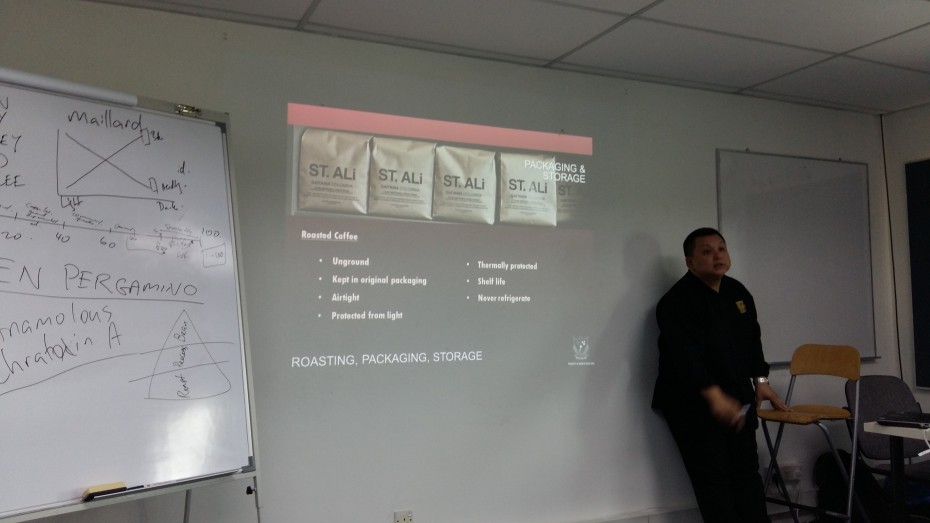
Liew during the classroom sessions. Be prepared for a flood of information! Don’t worry, though, notes are prepared for you.
All-rounder training
You don’t just learn about coffee-making at BGA, though. You also learn about industry best practices, like always cleaning your filter, and keeping your cups on top of the coffee machine so it stays nice and warm, but don’t put wet cups on it as your machine could get spoilt due to water dripping into it. Machines are really expensive, think tens of thousands of ringgit, so please dry those cups!
Health and safety measures were also drilled into us trainee baristas, like always staying well clear of the pipes that pump hot water through the coffee grounds in espresso-making.
Also, we learnt other safety basics like always keeping your wrist and arm aligned when knocking used coffee grounds from the filter into the bin.
“Imagine if you’re a professional barista making 100 cups of coffee a day. Your wrist will get injured if you don’t hold your arm the right way,” Liew said.
Testing the waters
My class of five got to have a very small taste of what it’s like to be a barista during our course. Think close to four hours of standing by a coffee machine pulling shot after shot of espresso, and THEN having to clean up your workstation.
Liew told us weary trainees that what we experienced is nothing compared to real baristas and having to make countless cups of coffee for about eight hours per shift. EIGHT HOURS PER SHIFT? I immediately scrapped all thoughts of being a professional barista (sorry, Daniel!).
Good investment
But for those who are truly passionate about coffee and thinking of being a barista, this would be a great course to take!
The programme includes three months of practice, where students are encouraged to come back and hone their skills in shot-pulling, milk frothing and latte art (which I failed miserably at, so the less said about it the better) before they sit for their exams. Those who pass would be professional baristas, certified by the Specialty Coffee Association of Europe (SCAE).
There is also a local exam set by BGA, which they have to pass before moving on to the SCAE certification exam.
Daniel Liew’s four steps for perfect latte art:
1. Froth the milk, and make sure it has a velvety smooth texture, and no rough or dry foam. BGA teaches students the different frothing techniques for cappuccinos, flat whites, and lattes.
2. Heat the milk to the optimum temperature of 60-65 degrees.
3. Ensure there is the correct amount of foam into the cup (different drinks have different amounts of foam). The micro foam should be wet and silky or velvety to the touch.
4. Pour the milk into the centre of the cup, and keep the speed consistent.
“Milk pouring is essential to good latte art, and practice is key,” he said, adding that it takes about a year to perfect the art of making, well, latte art. Doesn’t that make you want to tip your local barista just that much more? #Appreciate

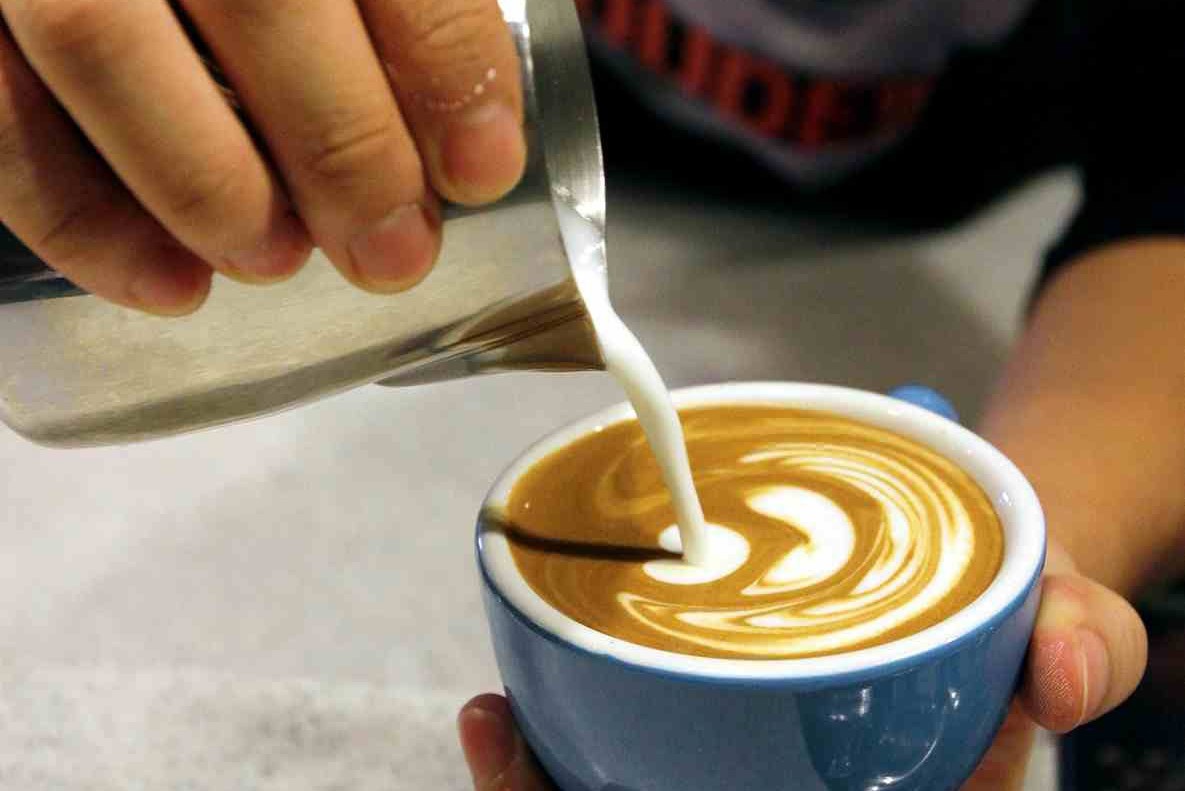
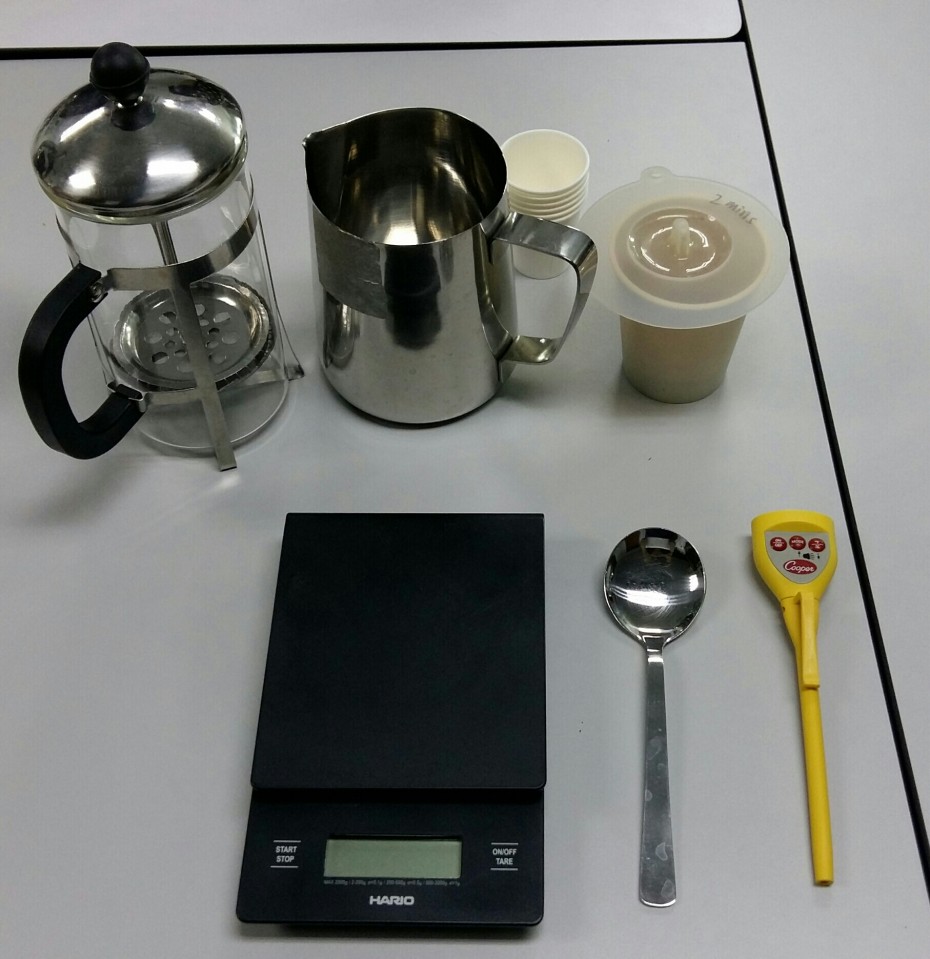
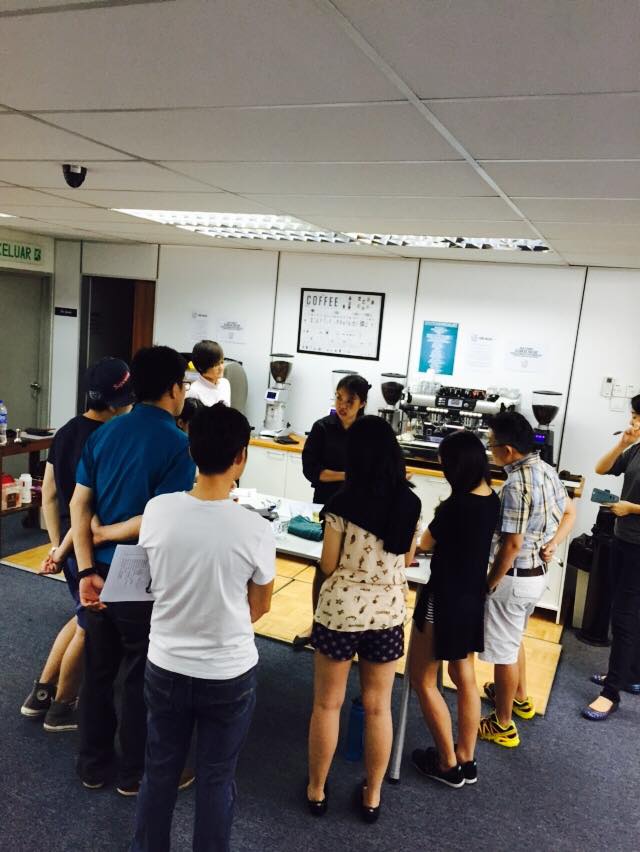
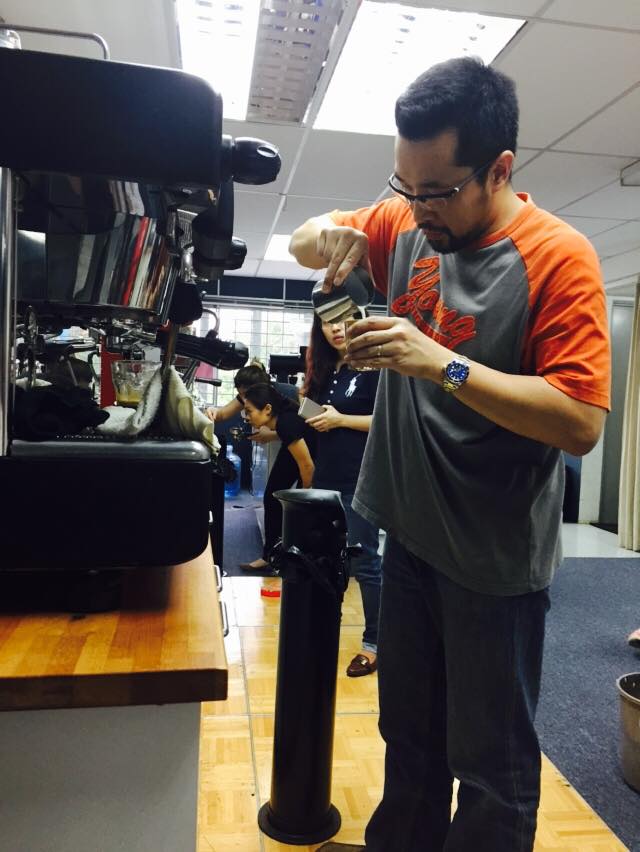





Tell us what you think!